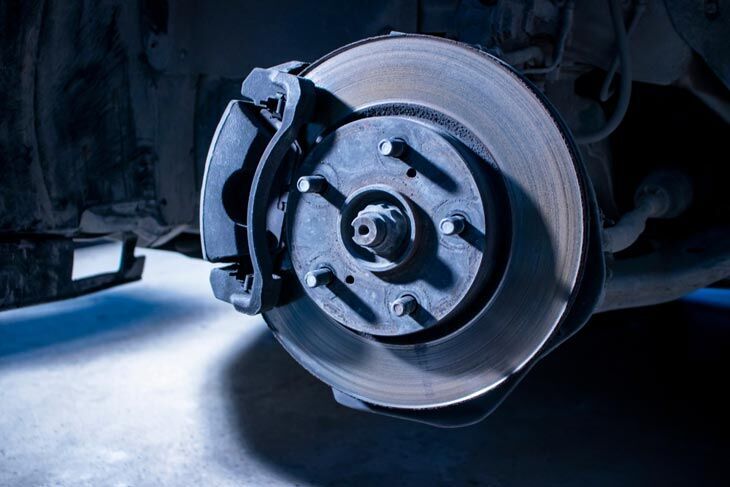El ruido del motor no es algo fuera de lo común. Pero los niveles de ruido más altos de lo habitual pueden implicar serios problemas técnicos.
Y una vez que su rugido se vuelve extremadamente violento, hasta el punto de que incluso confundes los sonidos con un helicóptero real, entonces ya no puedes encajar despectivamente y decir, ¡no es gran cosa!
Pero cuando su automóvil suena como un helicóptero cuando se acelera, ¿ qué problemas están en juego aquí?
¿Qué incita al automóvil para generar ruidos tan inquietantes? Nuestras pautas explorarán todas las causas posibles de tal dolor de cabeza.
¿Por qué el coche suena como un helicóptero al acelerar?
These symptoms are pretty obvious to most drivers, as the brakes efficacy often experiences a dramatic and noticeable drop.
2. Torn Brake Rotor
Similarly, tears and cracks push the brake rotors to scrape against the discs interior compartments. These instances stem from the huge space between it and the caliper as the pad breaks out.
As a result, the brake pads come in close contact with the rotors external rears, causing your vehicle to vibrate upon brake operation. In more severe cases, it might even come to a halt.
3. Inoperative Parking Brake
Determining whether the brakes malfunction or not is quite a challenge. Still, one tell-tale signal is in the air brakes, which stay engaged even while your regular brakes do not.
Worse, sometimes the brakes even engage and disengage by themselves, which calls for professional examination from experts.
4. Bad Brakes
Poor brake conditions are signified by noticeable creases on the surface, filled with crude and rust.
Those defects keep the brakes from effective rotor grips, giving the impression that all the sounds are emanating from its engine compartments. No wonder your car sounds like a helicopter !
5. Defective Wheel Bearing
6. Broken Fan Clutch Motors and Poor-Quality Tires
Defective fan blades will produce sounds like helicopters whenever you turn your car on or off, making the car accelerate or decelerate on its whim.
In the same vein, bad tires generate loud humming noises at faster speeds and only fade away once you slow down.
Such occurrences indicate a lack of proper gripping force, which might put you in danger if not fixed right away.
7. Exhaust Leak
Exhaust leak is also a possible reason. ¿Porque?
Thats because the exhaust has a separate exit other than tailpipes. But unexpected leakage might cause the black smoke to flow out of the tailpipes instead, meaning all the combustible fuel is discharged here.
All these clogging exhaust pipes generate more helicopter noise from front of car .
8. Vacuum Leak
Clicking sounds also originate from vacuum leaks, though these sounds tend to occur upon acceleration only. Other activities (such as cornering or slowing down) will not suffer from any impacts.
Still, we suggest you not leave this issue untreated for too long. Otherwise, the gasoline shortage from your engine might eventually render the car inoperable.
9. Faulty Catalytic Converter
10. Engine Problems
El motor podría haber estado mal funcionando si los RPM se someten a grandes disminuciones cada vez que empuja el pedal de gas.
Suponemos que el combustible insuficiente del motor es culpable aquí, lo que hace que el vehículo conduzca mal (o incluso nada). Eso explica por qué su automóvil suena como helicóptero al conducir .
Tenga una dirección profesional al problema de inmediato o solídelo usted mismo antes de que sea demasiado tarde.
11. Sistemas de escape malos
Las aceleraciones automovilísticas generan toneladas de ruido del avión de los tubos de escape, que pueden aludir a un sistema de escape gravedad.
En tales casos, el humo negro emite a una velocidad alarmante, probablemente debido a la gasolina no quemada que a través del sistema.
Además de los fumar y los ruidos extraños, también puede disfrutar de los intensos y desagradables olores de gasolina que impregnan el automóvil.
12 . Pobres montajes del motor
13. Mal volante
Los volantes malos comparten síntomas bastante similares a las fugas de escape, ya que ambos son causados por la descarga de gasolina no quemada en las tuberías de escape.
Por lo tanto, es comprensible que el humo negro, los olores molestos y el ruido del helicóptero en el automóvil también estén presentes aquí. Incluso durante la desaceleración, se niegan a desaparecer.
14. Falla de transmisión
Una caja de cambios defectuosa transmite más potencia del motor de la necesaria para el volante, excediendo sus límites preestablecidos.
El motor amplifica aún más estos grietas, lo que resulta en sonidos de helicópteros y turbinas rezagadas.
Las juntas CV dañadas también son otro posible culpable. Sus transmisiones se deslizan fuera del centro, bloqueando el camino entre la fuente de alimentación y sus ruedas.
Como resultado, todo el proceso de transmisión se ve gravemente afectado.
Sin embargo, este dilema no siempre es fácil de notar. Algunos conductores lo detectan de inmediato al conducir, mientras que otros necesitan asesoramiento e inspección de expertos.
15. bomba de agua mala
16. fallas de la bobina de encendido
Recuerde inspeccionar siempre si la bobina de encendido se suministra con suficiente potencia. Or else, the engine will fail to properly function, generating ear-piercing clatter whenever you press your foot on the gas pedals.
No on-time solution only worsens the coils conditions. It will shudder every few minutes and even refuse to start in cold weather.
17. Motor Bearing Defects
Motor bearings ensure the car spins are all within control. Substandard ones, on the other hand, cause extra friction on the motor and lead to excessive turbulence.
Also, keep in mind that numerous accidents have occurred to drivers who fail to replace motor bearings on time, since these busted vehicle parts equate to a much higher tendency to slip on the road.
How to Fix Helicopter Sounds?
Step 1. Unbolt the pan and jack up your car. As the ATF drains out, remember to put a tarp and a pan beneath it.
Step 2. Remove and replace the filter.
Paso 3 . Get rid of the old gearbox pan gasket to install a new one. Then bolt the pan and fill it with ATF.
Step 4. Start the automobile and keep an eye on potential leaks.
Step 5. Clean up the mess with kitten litter.
2. Change to New Wheel Bearings
Step 1. Park on a level surface to avoid the worst possible outcomes (such as the car rolling away).
Step 2. There are some bearings you are not going to replace. Pick some wheel chocks to secure them in place, giving the car increased stability.
Step 3. Undo the nuts before using a jack to lift this wheel. This move gives you appropriate access to the structural parts of the faulty bearing.
Step 4. Remove the races, which often call for high-performance tools such as mallet, chisel, and grinder. Of course, you should have substitute races prepared at hand. Remember to clean the load frame from the inside out when you finish.
Step 5. Put in new races and wheel bearings with a few hammer hits. Ensure they are aligned and shoved in as far as possible. Also, check whether the sealant rings lie flat against the assemblys exterior; if they havent yet, fix that immediately.
3. Reemplace el eje CV
Several automobile models also include a star wheel, which you should remove, too.
Step 2. Take Off The Axle Nut
Three approaches are possible. The first one is to pick an impact wrench - the simplest tool among the three.
Another method requires you to seize the brakes while unscrewing the bar, which prevents needless axle spinning.
How about the last solution? Keep the wheel running while slowly lifting the automobile off the ground with a floor jack.
Loosen the nut when you finish (remember that you will need to reverse this step in the end, once the whole task is completed).
Step 3. Detach The Ball Joint
Disengage the low control arm to pull the strut and remove axle joints from their bearing hubs. Do not forget to extract the low ball joint, too, to make room for these removals.
Certain ball joints also feature a self-locking cotter. Remove that (if any) using a pair of dikes.
Step 4. Install A Replacement CV Axle
With the replacement axle firmly held, lets reinsert it carefully into the gearbox to avoid destroying the transmission seals. Force it forward to ensure a proper fit.
It might take some time (and a little bit of jiggling) to shove it into the gearbox entirely, so try to be more patient.
This step requires lots of caution; otherwise, improper mounting will dislodge the axle while you are driving, bringing the poor vehicle to a halt.
Step 5. Reinstall the Axle Nut
First, use your bare hands (instead of any instrument) to reinstall the axle nut. This method might be a bit time-consuming, but it will keep cross-threading risks at bay.
Next, screw it back in compliance with the manufacturers torque specifications (usually from 121 to 141 foot-pounds). Finally, tighten the wheel before gradually lowering the vehicle back to the ground.
When driving for the first time, pay attention to any usual sounds. If helicopter noises are still clicking, maybe its time to recheck all the work you have done or bring the car to a repair shop.
Conclusión

Our article has explained why a car sounds like a helicopter when accelerating and delivers several promising solutions.
La mayoría de los problemas se pueden manejar bastante bien en el hogar, pero debe recurrir a la ayuda profesional si sus habilidades y experiencia mecánica están por debajo del promedio.
Otherwise, these dilemmas might get worse.
